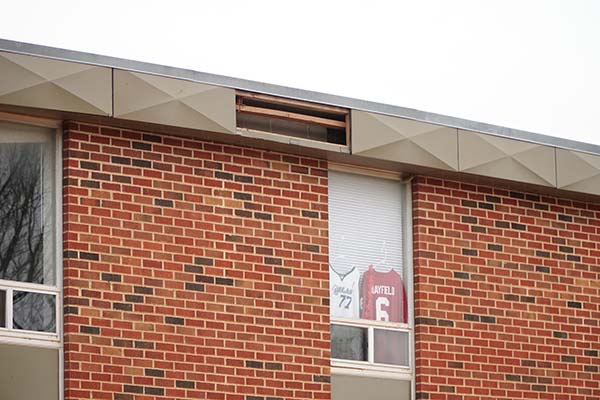By J.D. EDDY, Editorial Editor

Northwestern is a university that prides itself on being affordable for students. It maintains the freedom of giving a quality education and allowing students to meet new people and be exposed to a unique environment.
However, being affordable leads to some drawbacks in the money that we can spend. The average cost of tuition is around $8,000, making it among the most cost-efficient universities in the country without financial aid.
As a result, some of our facilities on campus are underfunded.
We are at a small D2 in the Panhandle of Oklahoma, and we do not have as much money flowing in as other universities in the state, like Oklahoma Baptist, Southern Nazarene and even Northeastern.
All of these schools have some sort of “fallback” plan when it comes to money. Northeastern is in Tahlequah, which is home to the Illinois River. Many people go there to float the river during the summer, and they pump money into the local economy.
Some of those customers and businesses also donate to the university.
Oklahoma Baptist is in Shawnee, about 45 minutes from Oklahoma City. Being a religious university, it doesn’t receive as much government funding as public universities. It is supported primarily by endowment funds and students’ tuition fees.
Southern Nazarene in Oklahoma City offers more for students to do than other universities in the state. As a result, it can have sponsorships from major businesses such as Chick-Fil-A.
One such sponsorship gave the college the freedom to build new dormitory halls that are like small apartments.
Northwestern doesn’t have the money for such projects. The word of the day is “budgeting,” and Northwestern is good at it.
According to the Oklahoma Policy Institute, the State of Oklahoma cut higher education funding by 35.3%, or more than $3,000 per student, from 2008 to 2019.
If you have seen the decline of financial aid in from 2018 to 2022 as I have, this is the reason behind it. These funding cuts make it less attainable for students to attend a four-year university. The average tuition cost in the state of Oklahoma increased by 31%, an average of $2,000 per student.
Little to no wage growth, tuition costs rising and the weaning of financial aid diminished enrollment numbers in four-year universities across Oklahoma by 9% during the same time period, according to the Policy Institute.
Many people see how expensive college is, and they go to the work force straight out of high school instead, allowing them to make money and start their adult life.
That being said, it is up to the state legislators to change the status quo and find some sort of solution. Our state would not be ranked 42nd in education if our funding for higher education had not been cut.
This article isn’t meant to bash Northwestern at all. The decisions our administrators make are based upon importance.
If funding continues to get cut, what will be next? Getting rid of the only Wi-Fi that we have on campus and switching to a system that barely works? That’s a joke. Don’t take it too seriously.
It is not Northwestern’s fault that our state does not value higher education. It sits upon our elected officials to figure out what they want the future of this state to be.
The Oklahoma State Board of Regents has asked for an $85 million increase to the budget. This would help colleges around the state increase enrollment and allow colleges to create more teaching positions.
Northwestern, even though it is underfunded, is one of the better universities to go to, but not because of facilities.
It’s the people who come here and make friendships that last a lifetime.
It is one of the reasons I enjoy being here. If not for that, I would have never came back.
But friendships only go so far. It’s time for our state leaders to increase higher education funding.

